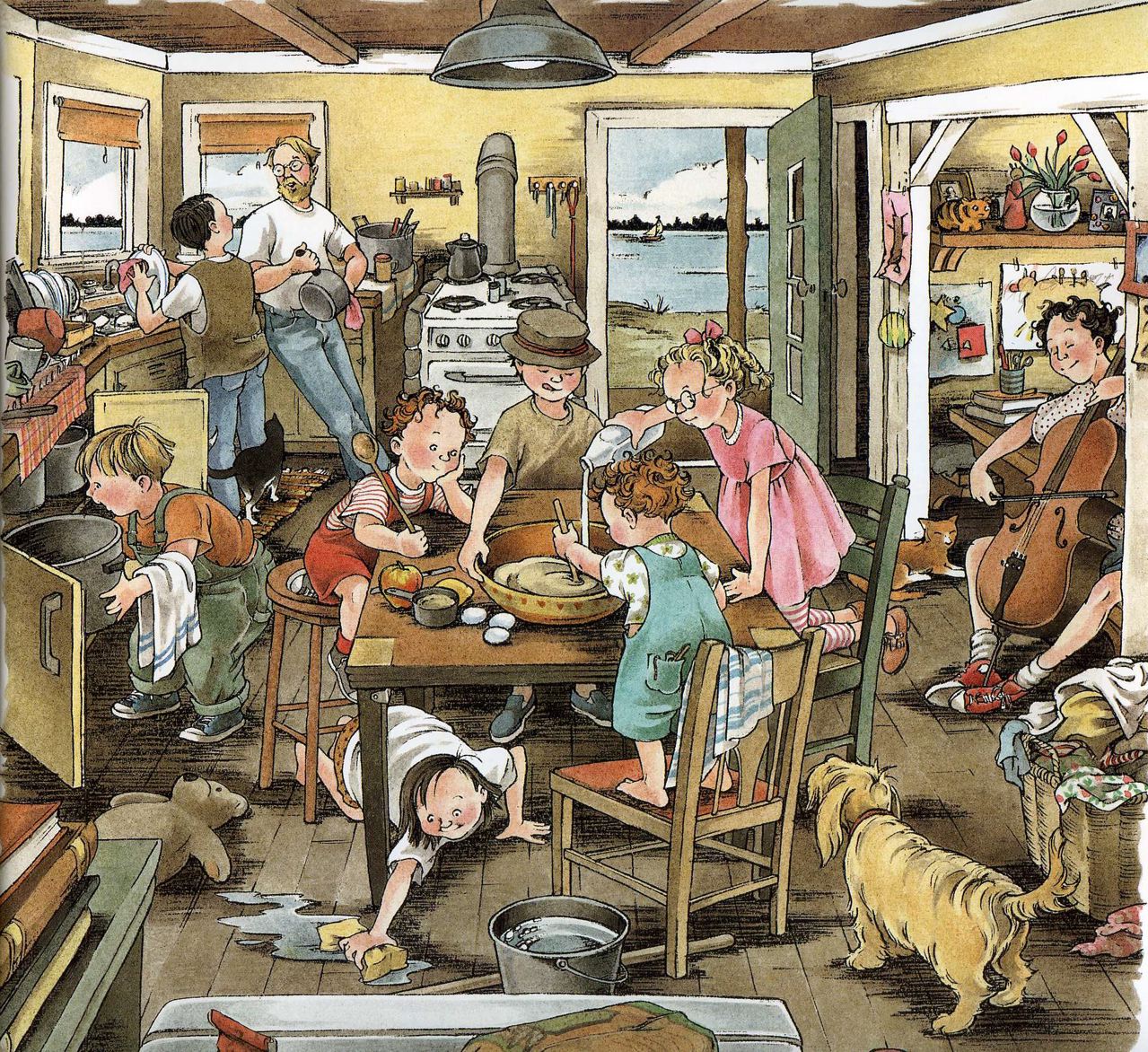
In 2009, The Heart and the Bottle, written and illustrated by Oliver Jeffers, was published. We have been gifted several of his books the past few years and my daughters consistently choose them to be read to them. It is for that reason that, when I was searching for a story to start to introduce the concept of death to them, that I noticed this book. I figured an author/ illustrator that they’re familiar with could be a good start. My father passed away a few years before my children were born and I’ve struggled with how to explain the topic to them in an age appropriate way. So, per usual, I have turned to books. The Heart and the Bottle comes up in most google searches related to children’s picture books on death. I’ll preface my review by saying this story successfully made me cry the good tears but I have yet to read it to my girls- I am waiting until they start asking more questions.
At the start of the story you see and young girl and an older male figure going on a walk together, reading and discussing aspects of the world together, laying under the stars together, out in the ocean together, and flying a kite and exploring on the beach together. It is obvious they are close as he helps her make sense of the wonders of the world around them.

One day, she goes to the chair he normally sits in to bring him a picture she had drawn and he is not there. She starts to feel sad about him not being there and decides to “…put her heart in a safe place. Just for the time being.” She takes her heart and puts it inside of a bottle. She says that it seems to fix things for her “…at first.”

The story continues, showing her doing similar things to what she and the man did before, but she starts to forget about all of the wonderful things she noticed before. “She was no longer filled with all the curiosities of the world and didn’t take much notice of anything…” She moves into adulthood without much feeling, with her heart around her neck in the bottle (bottling her emotions). One day she comes across a young girl on the beach who is full of awe and asks her a question. The older girl doesn’t know how to answer her, without her heart, and that inspires her to try to get it back from the bottle. Unfortunately, nothing she does works and she doesn’t know how to retrieve it. The bottle would not break to release her heart no matter how hard she tries. It occurs to her to ask the young girl for help, and without any effort at all, the young girl reaches in and pulls it out for her.

They put the heart back into the older girl and she goes to sit in the seat the male figure had sat in before. The end of the book shows her sitting in the chair with an open book, her mind full of wonder and imagination and again- “…the chair wasn’t so empty anymore. But the bottle was.” Without saying the words, this is a children’s story about love, grief, and moving forward.
I appreciate how the concept of missing someone can be transferred to any person who is absent from the child’s life for a period of time. It could be a grandparent that lives far away, it could be a friend who moves away, or it could be someone close to the child who dies. The story addresses very heavy emotions that can be hard for a child to experience, let alone try to explain. It doesn’t discount feeling sad or wanting to protect your heart, it is expected that will happen. It just shows that it’s OK to feel happy and in awe of the world, to form new relationships and move forward.
The illustrations master a balance of muted backdrops of nature with pops of color in the flowers in the first page spread, followed by intricate thought bubbles portraying the solar system, ocean, animals, plants, and the edge of the world, to a combination of the two in the third page spread. The facial expressions are simple, with an upwards line to indicate a smile to no line at all representing the sadness and lack of explanation or understanding of the feeling. The heart is portrayed both in the well-known love heart shape as well as the anatomically correct version. This is especially noted in the back inside cover of the book where an anatomically correct heart is drawn and labeled with proper titles of parts. The thought bubbles in the story are of importance to note as well- they ask questions that young children would find interesting, for example, although not explicitly stated, the young girl who helps bring curiosity back to the older girl whose heart is still in the bottle, has a thought bubble above her head appearing to question how elephants can swim. The story has a deep message but it isn’t without a fun sense of curiosity allowing for a mix of both hard and light topics. If something feels a little heavy or uncertain for a child, they can be brought back into the book with a smile.
For the child who may need help making sense of the harder parts of life, I highly recommend reading Heart and the Bottle with them.
Andrea Runnells



 Looking at this classic book’s cover can almost transport me back to my elementary school library.
Looking at this classic book’s cover can almost transport me back to my elementary school library. 

































